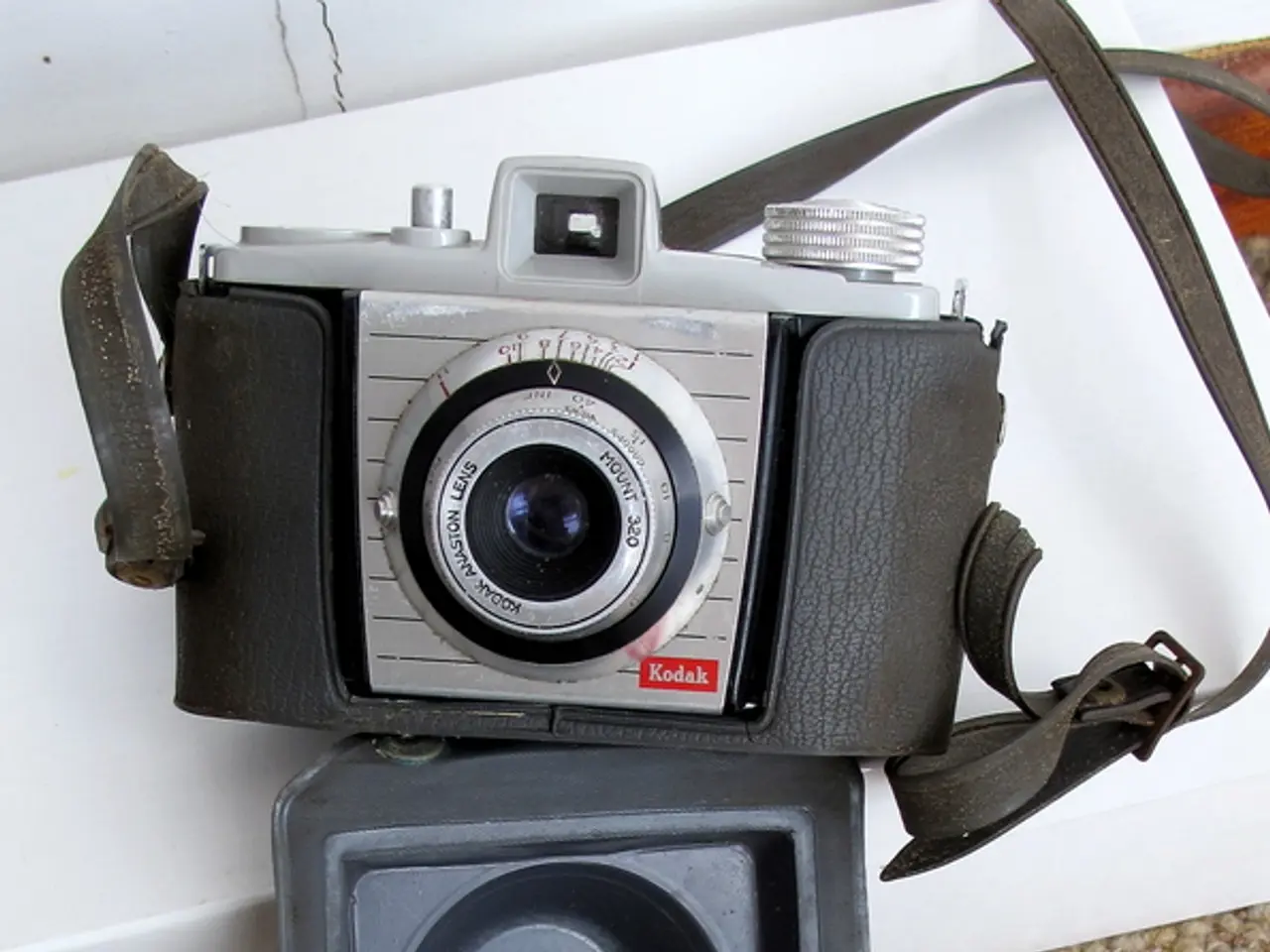opt for a different camera model over a Kodak disposable one
In the realm of film photography, disposable cameras have long been a popular choice for capturing memories. However, as we delve deeper into the world of film, we discover that reusable Kodak cameras offer a more sustainable and economical alternative.
For instance, the Kodak M35 and Kodak i60 are reusable film cameras that provide a charming film photography experience without the waste associated with disposables. These cameras are designed to be reloadable, reducing waste and cost over time.
The Kodak M35, priced around $30 / £25 / AU$50, is a step up from disposables, but it breaks even with the cost of two or three disposables in the long run. The M35 is a bit more involved for newbie or casual film photographers, but only requires learning how to swap out the film. In comparison, the Kodak i60 offers a more streamlined design, making it a preferred choice for some.
If you're in the market for a higher-end film camera, there's a model that's often considered the only one needed, though no specific model is mentioned here.
Beyond Kodak's reusable offerings, there are classic 35mm film cameras from other brands that make excellent alternatives for those interested in reusable film photography. For example, the Canon AE-1 and Nikon FE are highly praised for their durability, manual and semi-automatic controls, and compatibility with a wide range of lenses. These cameras offer greater creative flexibility and superior image quality compared to Kodak disposable cameras.
The benefits of reusable Kodak film cameras over disposables are numerous. They offer reloadable film, better image quality, and manual controls, not to mention a more stylish and improved handling experience. These cameras also allow for the development of photography skills through exposure settings and can be used with color or black-and-white 35mm film, giving artistic options.
For those seeking a more unique aesthetic, medium format cameras (using 120 film) could be an option, though they are less compact and more specialized than disposables or 35mm alternatives.
Mike Harris, a renowned photographer and tutor, offers insights into these cameras. His expertise extends to various photography subjects, including portraits, landscapes, abstracts, architecture, wildlife, and fast things going around race tracks. Harris has bylines in several photography and consumer tech publications, including Digital Camera, PhotoPlus: The Canon Magazine, Practical Photography, Digital Photographer, iMore, and TechRadar.
In conclusion, reusable Kodak cameras like the M35 and i60 provide a convenient and accessible way to move beyond disposable film cameras. Classic 35mm cameras from brands like Canon and Nikon offer further creative control and quality for enthusiasts stepping up their film photography. Just remember, airport scanners can potentially ruin travel snaps from a disposable film camera, so consider reusable options for your next film photography adventure.
[1] Source: Wex Photo Video [2] Source: Camera Jabber [3] Source: Lomography
- The Kodak M35 and Kodak i60, reusable film cameras, provide a charming film photography experience, reducing waste and cost over time.
- The Kodak M35, priced around $30 / £25 / AU$50, is a step up from disposables, breaking even with the cost of two or three disposables in the long run.
- The Kodak i60 offers a more streamlined design, making it a preferred choice for some, while the M35 is a bit more involved for newbie or casual film photographers.
- In the world of reusable film cameras, a higher-end model is often considered the only one needed, though no specific model is mentioned here.
- Beyond Kodak's reusable offerings, classic 35mm film cameras from other brands, such as the Canon AE-1 and Nikon FE, offer greater creative flexibility and superior image quality.
- Reusable Kodak film cameras offer reloadable film, manual controls, and allow for the development of photography skills through exposure settings.
- For those seeking a more unique aesthetic, medium format cameras using 120 film could be an option, though they are less compact and more specialized.
- Mike Harris, a renowned photographer and tutor, provides insights into reusable film cameras and various photography subjects, with bylines in numerous photography and consumer tech publications.
- When planning a film photography adventure, consider reusable options to avoid potential damage from airport scanners to travel snaps from disposable film cameras.
Sources: Wex Photo Video, Camera Jabber, Lomography




